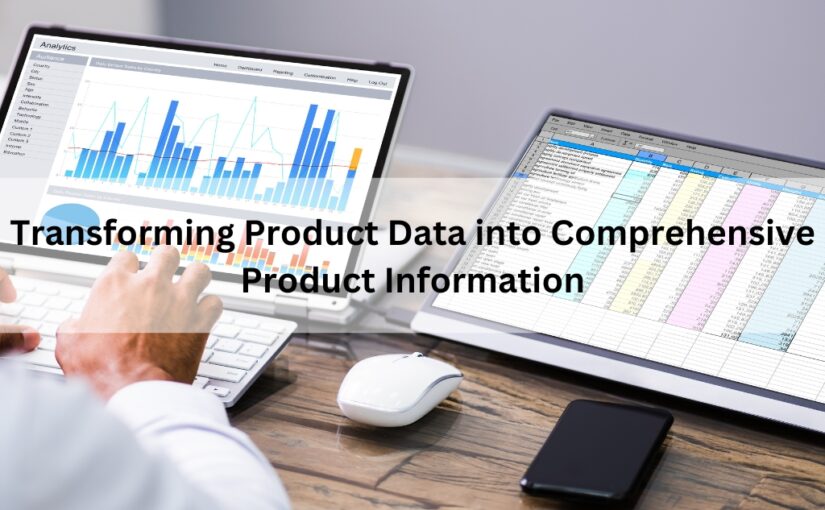Transforming Product Data into Comprehensive Product Information
When encountering the terms “product data” and “product information,” individuals often mistakenly believe they are interchangeable. However, data and information are distinct entities: data represents raw, unprocessed material, while information is the organized, meaningful output derived from processing data. Managing data is inherently challenging due to its raw and disparate nature, which spans various formats, locations, languages, and media types. Organizations operate through the amalgamation of people, processes, technology, measurements, and materials, all of which are heavily dependent on commands driven by information.
Transitioning from managing product data to managing product information requires a shift from a focus on raw data to a more comprehensive and organized approach that adds value and context.
Here’s a step-by-step guide for this transformation:
1.Understand the Difference:
Clearly define the distinction between data and information for your team, emphasizing that data is the raw material, while information is the processed, meaningful output.
2.Define Information Goals:
Determine the specific goals and aims you aim to achieve by transforming your approach, such as improving customer experience, enhancing decision-making processes, or streamlining internal operations.
3.Implement a Product Information Management (PIM) System:
Adopt a PIM system to centralize and organize product information, providing tools for enrichment, standardization, and distribution of information across various channels.
4.Enrich Data with Context:
Enhance your product data by adding contextual information like detailed descriptions, images, specifications, and other relevant details, ensuring that the information is not only correct but also comprehensive and valuable.
5.Standardize Data Formats:
Implement standardized formats for product information to make it easier to manage and understand both internally and externally.
6.Ensure Data Accuracy:
Establish processes to regularly confirm and update product information, as accuracy is crucial for building trust with customers and making informed business decisions.
7.Integrate Systems for Seamless Flow:
Integrate your PIM system with other business systems, such as ERP or e-commerce platforms, to ensure a seamless flow of information across the organization and reduce the risk of data silos.
8. Empower Cross-Functional Collaboration:
Foster collaboration between different departments involved in managing product information. Encourage communication between marketing, sales, and product development teams to ensure a comprehensive approach.
9.Focus on User Experience:
Consider the end-user experience when designing and presenting product information, including how information is presented on your website, in marketing materials, and within internal systems.
10.Implement Feedback Mechanisms:
Establish mechanisms for gathering feedback on product information from both internal stakeholders and customers, using this feedback to continuously improve and refine your approach.
11.Train and Educate Teams:
Conduct training sessions to ensure that your teams understand the importance of managing product information and how to use the tools and systems effectively.
12.Monitor and Evaluate:
Continuously monitor the performance of your product information management system, evaluating its impact on operations, customer satisfaction, and other relevant metrics.
Enventure PIM Solutions supports companies in implementing a PIM strategy through a range of services including Taxonomy and Classification, Data Enhancement, Data Quality, Digital Asset Optimization, Data Governance, Integration with Various Systems, PIM Implementation, and Sales and Marketing Strategy Implementation.










